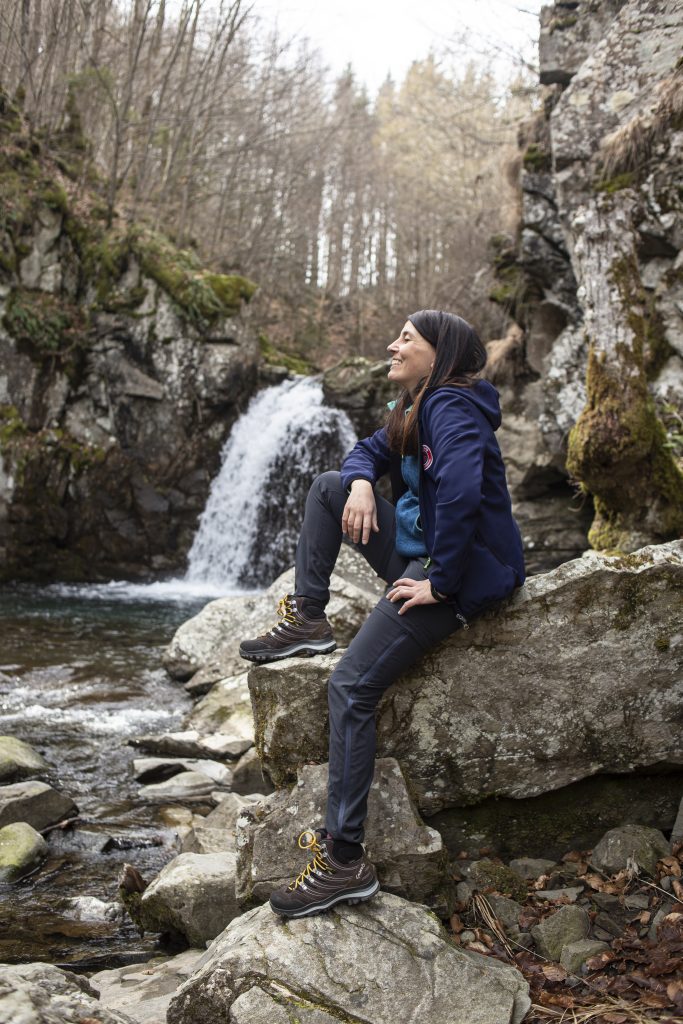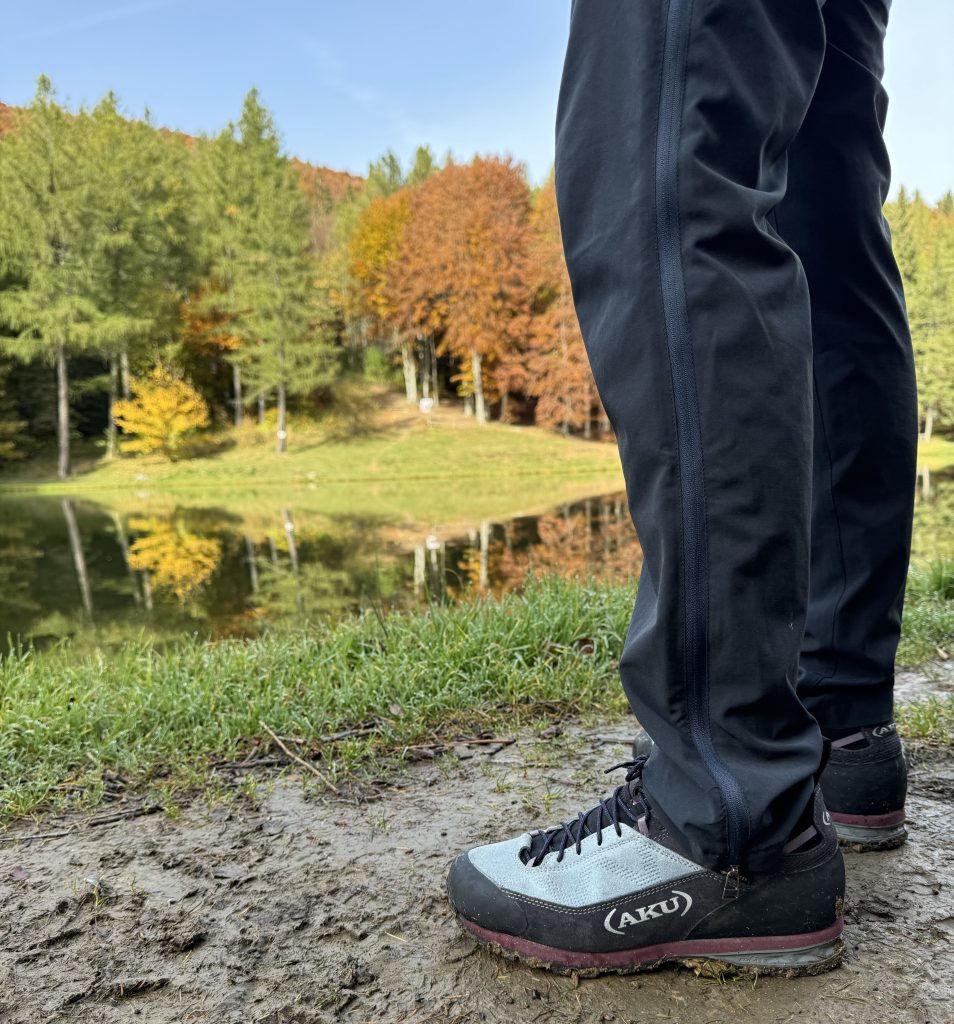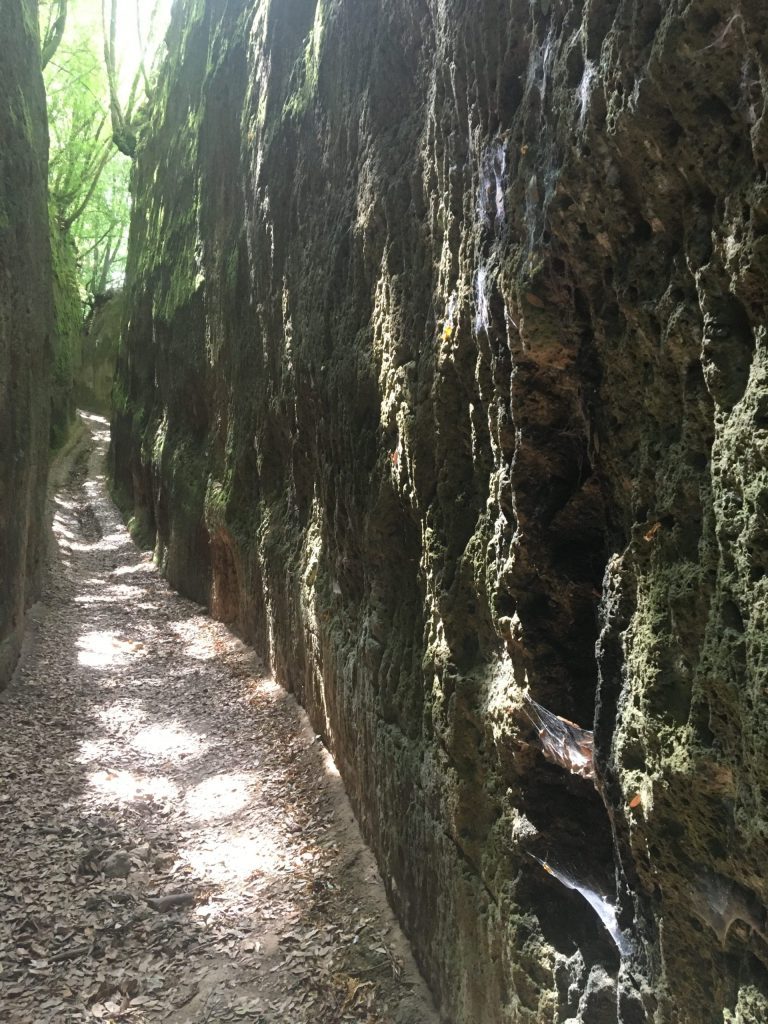How to properly choose your trekking shoes, a guide on 3 AKU models personally tested by Martina Pavoni.
How should you choose the appropriate trekking shoes?
In this short guide I will tell you the essential characteristics of trekking shoes, based on the type of excursions you like to take.
Tackling a hike without the right shoe can start off as an exciting adventure to quickly become a negative one. No need to be scared. I just want to make you aware that, in order to properly face a trek you will need to have your head on your shoulders and a pair of suitable trekking shoes on your feet!
To ensure the highest performance during your hikes, it is essential to choose a shoe that combines comfort, thermal insulation (whereas necessary), breathability and waterproofness.
If you are looking for the ideal shoes for your winter trekking, you are in the right place!
Choosing the right trekking shoe depends on several factors, including:
Type of terrain: in case of off the beaten track trail and not very technical paths it is better to choose light and flexible shoes, preferably low and with a good ankle mobility. On the other hand, for rocky or uneven terrain it is better to choose footwear with greater support and protection for the ankle.
Duration: The length of an hike represent a foundamental factor as well. For a short trek, a light and breathable shoe may suffice while for a medium or long trail, it is preferred sturdier but still comfortable footwear. It is different if we are talking about a multi-day trek. Comfortable footwear, not too heavy and above all previously tested, should be preferred. Going on a multi-day trek with new trekking shoes can be very risky, you might develop blisters or realize that the shoe isn’t right for you.
Seasonality and place: depending on the climate and season we will give priority to more breathable shoes or, vice versa, to greater thermal insulation and also the place where we will carry out the excursion will have its impact on the choice of trekking shoes as well.
Also pay attention to the sole and the grip (i.e. adhesion), especially in relation to the type of terrain on which you are going to walk.
I have personally tested some of the AKU models.
So let me tell you about my experience. AKU is a company that goes against the modern trend’s “fashion” market, in fact the products are meant to last long time.
When I say “long” I mean years and this is a philosophy that unfortunately, in the modern capitalist world, few companies decided to pursue. Luckily, this Venetian company has made the durability of its footwear one of its flagships. It is also possible, for many models, to use the resoling service, which will make your shoes last even longer!
Here’s the list of shoes I personally tested:
Let’s start with the AKU Alterra GTX. This is an ankle-high trekking boot ideal for long-term hikes and challenging terrain. Thanks to the Gore-Tex Performance Comfort technology and Elica Natural Stride system and the Vibram® sole it guarantees grip on wet and dry surfaces and excellent impermeability to water and snow.
Pros: Comfort, sturdiness and support. Cons: Higher weight than other models in the same category, a little rigid during the initial use.
With the AKU Link GTX Ws it was love at first sight. Low and super comfortable shoe from the first use; fit suitable for medium-wide soles, good grip on different terrains, highly breathable but with good waterproofness. Also in this case equipped with Gore-Tex technology and Vibram® sole which guarantees good grip on different terrains. It is the perfect shoe for medium-duration trekking.
Pros: Versatile and breathable. Cons: Not suitable for overly technical excursions.
The Selvatica Tactical GTX is a low shoe, ideal for fast hikes and light trekking on mixed terrain. Perfect for those who are looking for lightness and stability during dynamic hikes. The only one of the three not in suede material, but in technical fabric and microfibre, perfect for breathability and lightness. Here too Gore-Tex and Vibram® sole which in this case offers excellent grip on both dry and wet terrain.
Weight: Approximately 470 grams per half pair.
Pros: Light, dynamic. Cons: Not recommended for super technical excursions or very rough terrain.
Obviously the choice between these three models or any trekking shoe in general depends on your needs.
with the right footwear, every excursion becomes a fun and, above all, safe experience. I hope this guide has been helpful to you. Now all you have to do is choose the trekking shoes that best suits you and set off on the next adventure!
This article has been written by my friend and colleague Martina Pavoni
Trekking Guide – AIGAE ER897
In order to follow her on Instagram you can click HERE




